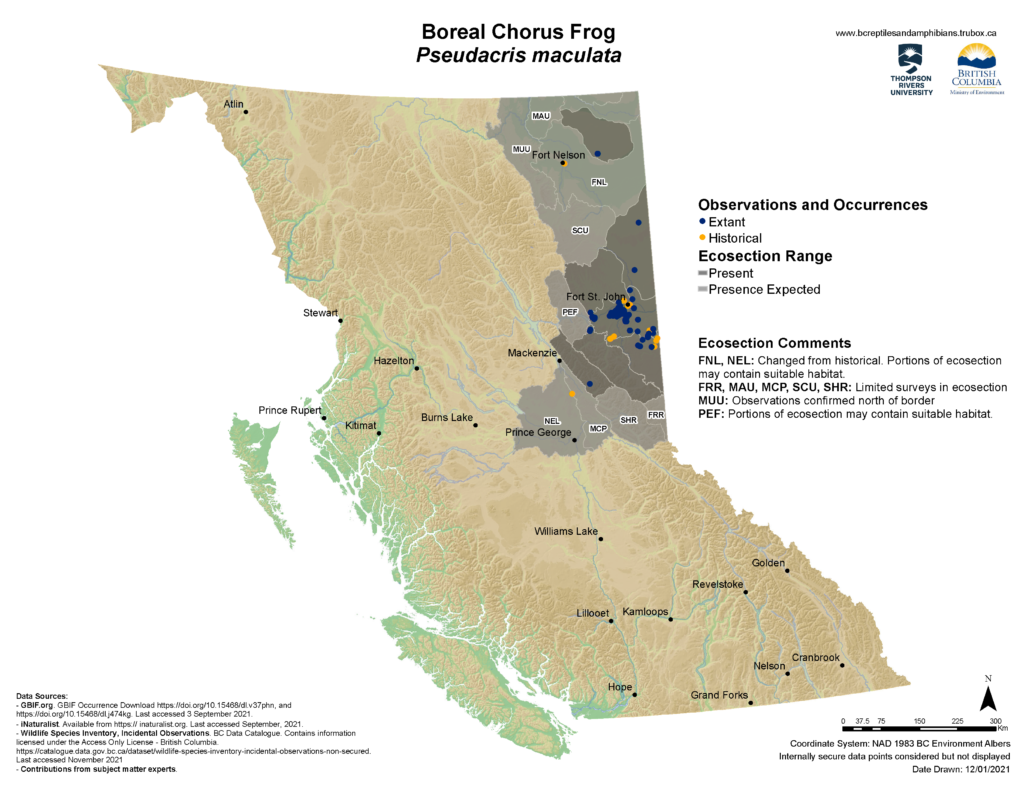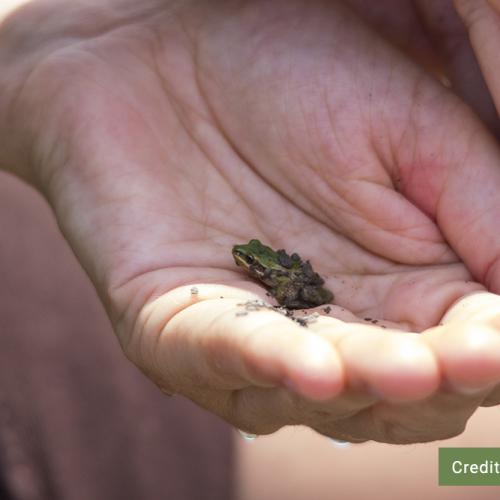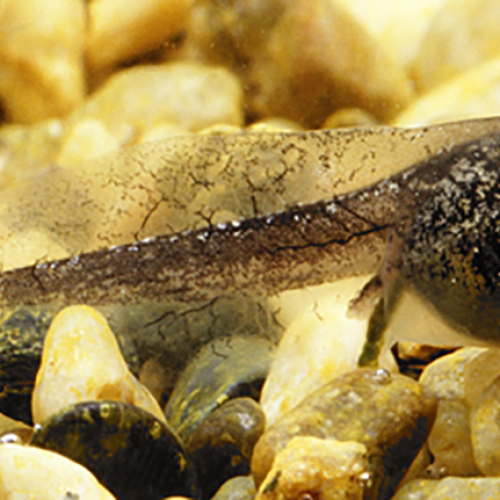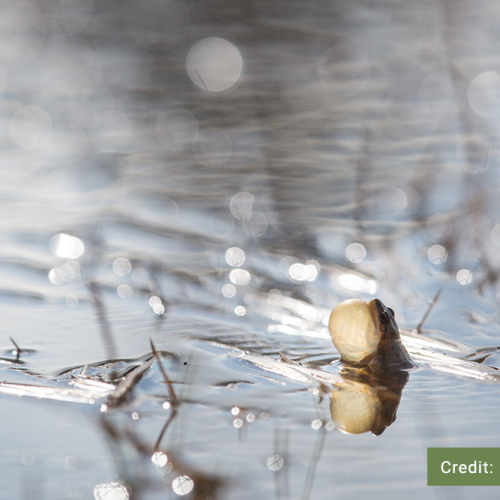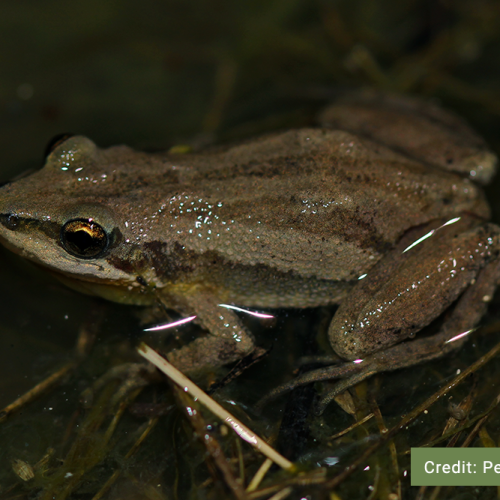Credit: Peter Paplanus
Boreal Chorus Frog
Pseudacris maculata
Description
Other names: Boreal Tree Frog
Listen to the Indigenous words for “frog” here!
Boreal Chorus Frog Call
The call of the Boreal Chorus Frog is a series of high-pitched, rising trills. It has been said to resemble the sound made by running a finger along the teeth of a comb. The breeding call is similar to the Western Chorus Frog, but is longer and pulses more slowly. During the breeding season, many frogs will begin to call together, creating a loud ‘chorus’.
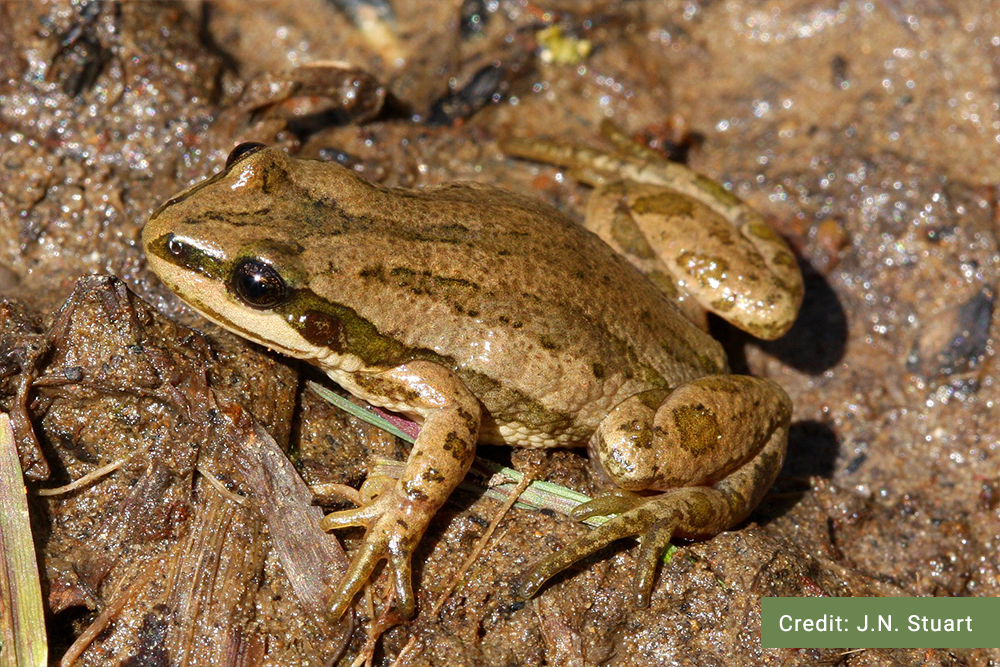
Boreal Chorus Frog Call
The call of the Boreal Chorus Frog is a series of high-pitched, rising trills. It has been said to resemble the sound made by running a finger along the teeth of a comb. The breeding call is similar to the Western Chorus Frog, but is longer and pulses more slowly. During the breeding season, many frogs will begin to call together, creating a loud ‘chorus’.
Similar Species
The Boreal Chorus Frog may be confused with the Pacific Treefrog. However, ranges of these species do not overlap in B.C., so they are best distinguished by their location. The Boreal Chorus Frog has three stripes down the back (may be broken into blotches). The Pacific Treefrog has a black mask that also runs horizontally through the eye, but does not extend past the shoulder, and it has larger, more distinct toepads. Also, adult Treefrogs are much larger than Boreal Chorus Frogs.
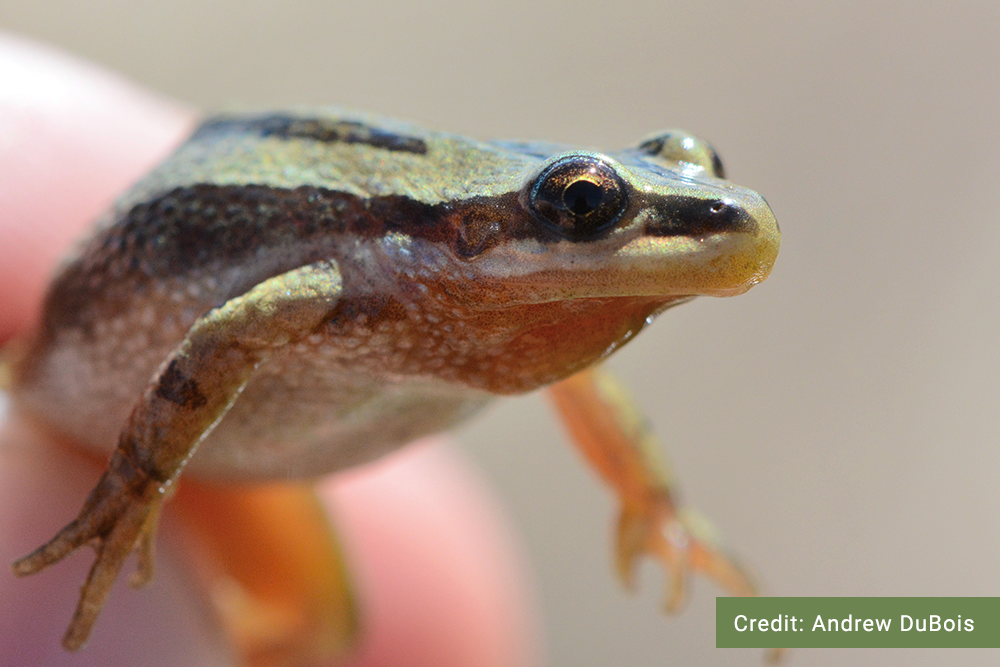
Boreal Chorus Frog
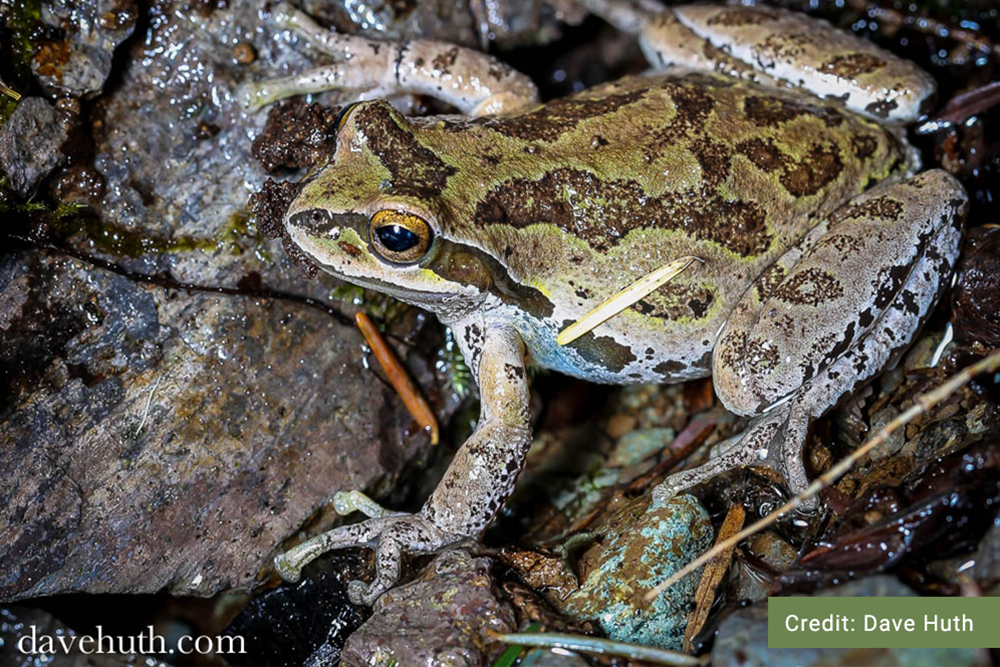
Pacific Treefrog
Distribution
Habitat
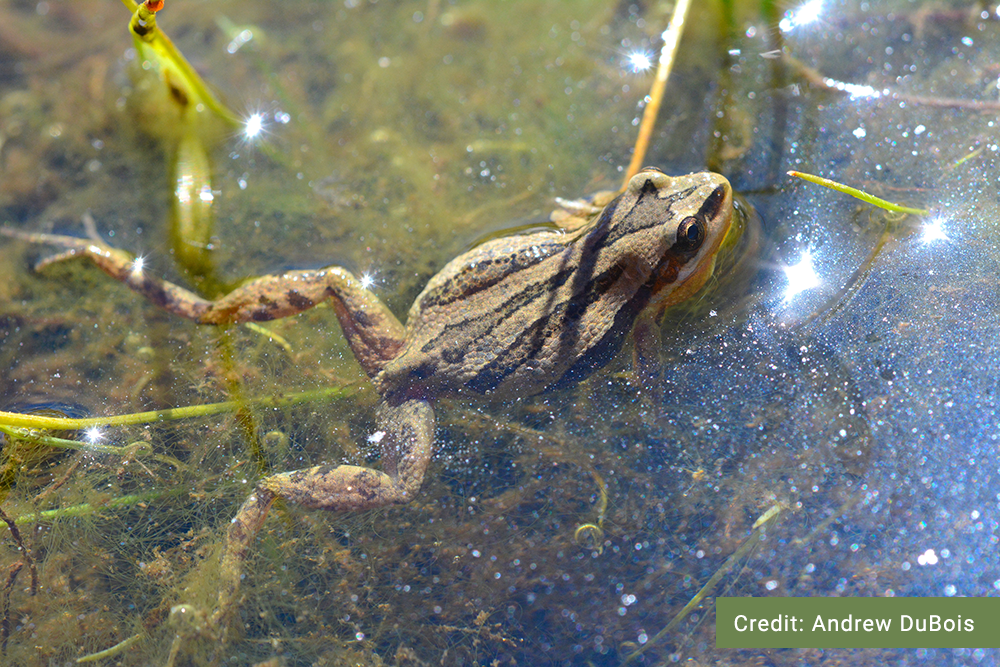
Reproduction
Boreal Chorus Frogs breed very early in the spring and are often present at ponds before the ice has completely melted. Breeding occurs from early May to June, depending on local weather, elevation, and latitude. Males will congregate and call during the day and night to attract females. Fertilization occurs externally via amplexusDefinition:The mating position of frogs and toads in which the male clasps the female about the back.. Females deposit between 150-1,500 eggs in clusters of 30-75 attached to vegetation. Eggs hatch within a 10 – 14 days and tadpoles reach metamorphosis by early to mid-summer. Boreal Chorus Frogs will begin reproducing after one or two years and rarely live beyond three years.
Diet
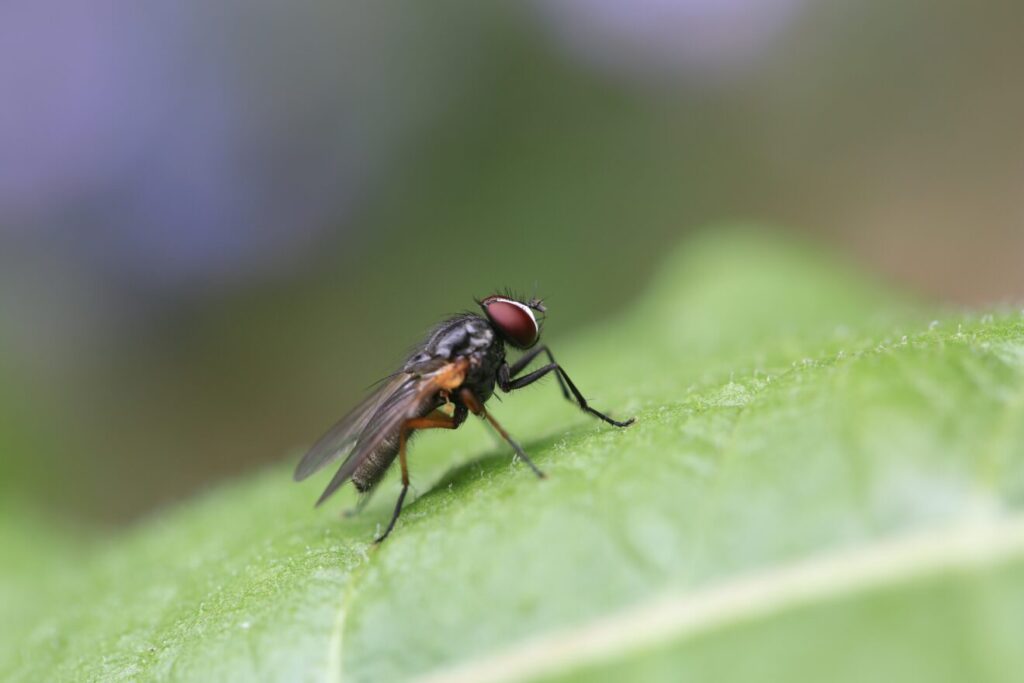
Conservation Status
Global: S5 (2017)
Provincial: S4S5 (2010)
BC List: Yellow
Learn more about conservation status rankings here
Threats

Did You Know?
Boreal Chorus Frogs can be thought of as the groundhogs of spring. While these little frogs probably don’t cast much of a shadow, they are one of the earliest amphibians to emerge from hibernation, and they will often come out before the snow and ice have even melted.
The call of the Boreal Chorus frog is very loud, and if you stand near the edge of a pond where many males are chorusing together, your ears will ring!
Species Account Author: Marcus Atkins
Available: https://a100.gov.bc.ca/pub/eswp/ (accessed May 18, 2021).
Rogic, A., Tessier, N., & Lapointe, F. J. (2019). Genetic Characterization of Imperiled Boreal Chorus Frogs Identifies Populations for Conservation. Journal of Herpetology, 53(2), 89-95.
Seburn, D. C., Gunson, K., & Schueler, F. W. (2014). Apparent widespread decline of the boreal chorus frog (Pseudacris maculata) in eastern Ottawa. The Canadian Field-Naturalist, 128(2), 151-157.
https://www2.gov.bc.ca/gov/content/environment/plants-animals-ecosystems/wildlife/wildlife-conservation/amphibians-reptiles/amphibians-in-b-c/frogs-toads
http://a100.gov.bc.ca/pub/eirs/finishDownloadDocument.do?subdocumentId=646
https://linnet.geog.ubc.ca/efauna/Atlas/Atlas.aspx?sciname=Pseudacris%20maculata&ilifeform=1
http://www.canadianherpetology.ca/species/species_page.html?cname=Boreal%20Chorus%20Frog
https://www.naturewatch.ca/frogwatch/boreal-chorus-frog/#:~:text=Call%3A%20The%20breeding%20call%20is,the%20teeth%20of%20a%20comb.&text=It%20is%20also%20found%20in,through%20part%20of%20its%20range

